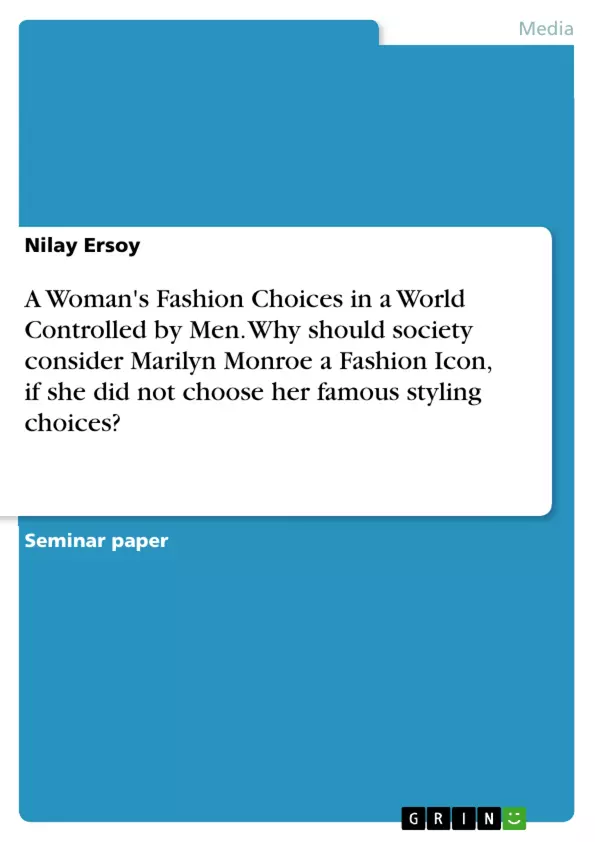This paper explores the complex interplay between fashion, sexual objectification, and empowerment, using Marilyn Monroe as a central case study. It examines how Monroe, often celebrated as a fashion icon, navigated the tensions between societal expectations and personal identity in a patriarchal world. The study delves into the distinction between Monroe's public persona—shaped by Hollywood's portrayal of her as a seductive symbol—and her private style, which was markedly more minimalist and reflective of her true self, Norma-Jean. Through this lens, the paper argues that while Monroe's fashion choices, particularly those dictated by male filmmakers, contributed to her objectification, they also provided her with a form of empowerment. This paradox highlights the nuanced ways in which women like Monroe have historically negotiated power within the confines of societal norms. Ultimately, the paper contends that while Monroe's public image was largely crafted by male-driven narratives, her personal style offered her a means of reclaiming some agency, illustrating the ongoing struggle for female autonomy in a male-dominated society.
Inhaltsverzeichnis (Table of Contents)
- A Woman's Fashion Choices in a World Controlled by Men.
- Objectification, Empowerment, and Style
Zielsetzung und Themenschwerpunkte (Objectives and Key Themes)
This paper explores the complex relationship between female objectification and fashion, using Marilyn Monroe as a case study. It examines whether women can achieve empowerment through embracing their sexualized image in a patriarchal society. The paper analyzes the tension between external objectification and internalization of societal norms, particularly in the context of fashion choices.
- Female objectification and its impact on women's lives.
- The role of fashion in both perpetuating and challenging objectification.
- The potential for female empowerment through strategic utilization of one's image.
- The evolution of research on female objectification and its relationship to feminist perspectives.
- The connection between sexuality, empowerment, and women's agency in a patriarchal society.
Zusammenfassung der Kapitel (Chapter Summaries)
- A Woman's Fashion Choices in a World Controlled by Men. This chapter introduces the central question of the paper: can women gain empowerment through their fashion choices in a patriarchal society that objectifies them? The author uses Marilyn Monroe as an example, discussing the impact of her iconic image and the role of men in shaping her public persona. The chapter explores the tension between Marilyn Monroe's public image and the personal style of Norma-Jean, the woman behind the icon.
- Objectification, Empowerment, and Style This chapter delves deeper into the concepts of objectification and empowerment. It examines how research on female objectification has evolved, focusing on the distinction between internal and external objectification. The chapter further investigates how some women might utilize external objectification to gain power within a patriarchal system, challenging the traditional understanding of female empowerment. It also explores the complex connection between empowerment, sexuality, and women's fashion choices.
Schlüsselwörter (Keywords)
This paper focuses on the key concepts of female objectification, fashion, empowerment, and the role of patriarchal systems in shaping women's experiences. It explores the tension between external objectification and internalization of societal norms, particularly in the context of women's fashion choices. The paper utilizes Marilyn Monroe as a case study to analyze how women might strategically utilize their image to achieve some level of power within a patriarchal society.
- Quote paper
- Nilay Ersoy (Author), 2023, A Woman's Fashion Choices in a World Controlled by Men. Why should society consider Marilyn Monroe a Fashion Icon, if she did not choose her famous styling choices?, Munich, GRIN Verlag, https://www.grin.com/document/1499681



